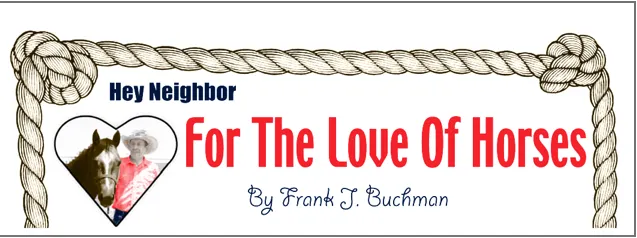Tying-up is a syndrome or description of a horse with muscle damage that has many different causes.
“It is one of the most misunderstood and controversial syndromes in the athletic horse,” said Dr. Stephanie Valberg, equine veterinarian.
“Since there are several causes, some of which appear to be inherited, there is no single cure,” she added.
Typical signs of tying-up include a horse which becomes stiff, sweats, and is reluctant to move, according to Valberg.
In recent years, researchers have learned a great deal about tying-up, scientifically named exertional rhabdomyolysis.
Unfortunately, the information has shown that some of the most common beliefs about tying-up have been proven wrong.
What early researchers considered to be a problem with one cause, it is actually a broad-scale syndrome requiring continued research.
“In other words, tying-up is not one disease, but several different diseases with similar signs but different causes,” Valberg said.
Therefore, management of a Thoroughbred suffering from tying-up differs from management of a Quarter Horse or a backyard pleasure horse.
Some horses are healthy athletes that tie-up sporadically likely due to exercise in excess training, electrolyte depletion, or dietary imbalances.
“They respond well to rest, a gradual return to a graduated training regime, and balancing the diet,” Valberg said.
Other horses will suffer from chronic episodes of tying-up that can be debilitating.
“Our research suggests that there might be several inherited reasons for chronic tying-up,” Valberg said.
Certain lines of Thoroughbreds seem more susceptible to one form of tying-up with abnormal regulation of muscle contraction.
Triggering events include stress, excitement, lameness, high grain diets, and exercise at submaximal speeds.
Young fillies are most commonly affected and usually are the most nervous and high strung.
Prevention of further episodes of tying-up in susceptible horses should include standardized daily routines and minimizing stress and excitement.
The diet should be adjusted to include a balanced vitamin and mineral supplement, high-quality hay, and a minimum of carbohydrates.
Daily exercise is essential, either in the form of turnout, longing, or riding.
“Sometimes medications such as dantrolene given to fasted horses 90 minutes before exercise are helpful to prevent tying-up,” Valberg said.
Another form of tying-up is polysaccharide storage myopathy (PSSM). It is characterized by the accumulation of glycogen (storage form of sugar) and an abnormal sugar (polysaccharide) in skeletal muscle.
A form of PSSM called type 1 PSSM is caused by a mutation in the glycogen synthase gene. “Type 1 PSSM occurs in many Quarter Horses, draft breeds, warmbloods and several other breeds,” Valberg said.
It has not been identified in Thoroughbreds to date. This mutation causes PSSM horse’s muscle to continually make glycogen.
Consequently, when beginning exercise, they have trouble switching over to burn glycogen for energy rather than storing glycogen in muscles.
“Affected horses develop stiffness, muscle cramping and soreness due to a deficit of energy generation in their muscles,” Valberg said.
“PSSM type 1 horses are often calm, sedate horses that tie-up after a lay-up, especially when fed grain,” Valberg said. They tend to be found in disciplines such as halter and pleasure horse performance and do not usually perform well at speed.
Type 2 PSSM has a slightly different microscopic appearance and is due to a yet unknown genetic cause. It occurs in Quarter Horse-related breeds, warmbloods and likely other light horse breeds possibly including Thoroughbreds.
While type 1 PSSM is diagnosed by a DNA-based blood or hair root test, type 2 PSSM requires muscle biopsy.
“Horses with severe signs of PSSM should also be tested for a second genetic mutation called MH,” Valberg said. “When MH and type 1 PSSM occur together horses may develop severe episodes of tying up which can be fatal.”
Treatment of both forms of PSSM involves supplying horses with an alternative energy source such as fat rather than sugar.
Eliminating grain and feeding fats such as rice bran or vegetable oils stabilizes blood sugar and provides energy metabolism.
It is essential that horses with PSSM be turned out as much as possible and exercised often, even if only for 10 minutes every day.
“Horses with mild to moderate signs might be able to return to full athletic performance with management changes,” Valberg said.
“Breeding horses with PSSM has at least a 50 percent chance of passing the trait on to offspring,” she said.
Pre-screening horses for type 1 PSSM is now possible at the University of Minnesota Diagnostic Laboratory.
If a horse ties up, here are suggestions:
1) Stop exercising the horse and move it to a box stall. Do not force the horse to walk.
2) Call veterinarian.
3) Blanket the horse if the weather is cool.
4) Determine if the horse is dehydrated due to excessive sweating.
5) Provide fluids with small, frequent sips of water to hot horses, and provide free access to water once the horse has cooled out.
6) Relieve anxiety and pain with drugs prescribed by veterinarian.
7) Remove grain and feed; provide only hay until signs subside.
8) Small paddock turnout is good once the horse walks freely.
CUTLINE
Tying-up is a syndrome or description of a horse with muscle damage that has many different causes, said Dr. Stephanie Valberg, equine veterinarian.





